Key Takeaways
- Cat fleas (Ctenocephalides felis) are the most common fleas found on both dogs and cats.
- Fleas go through several life stages—egg, larvae, pupa, and adult—and can reproduce rapidly.
- Fleas cause serious health problems like Flea Allergy Dermatitis and flea-induced anemia.
- Prevent fleas by using regular flea treatments, cleaning your home, and maintaining your outdoor space.
- Early intervention is key to treating and preventing flea infestations.
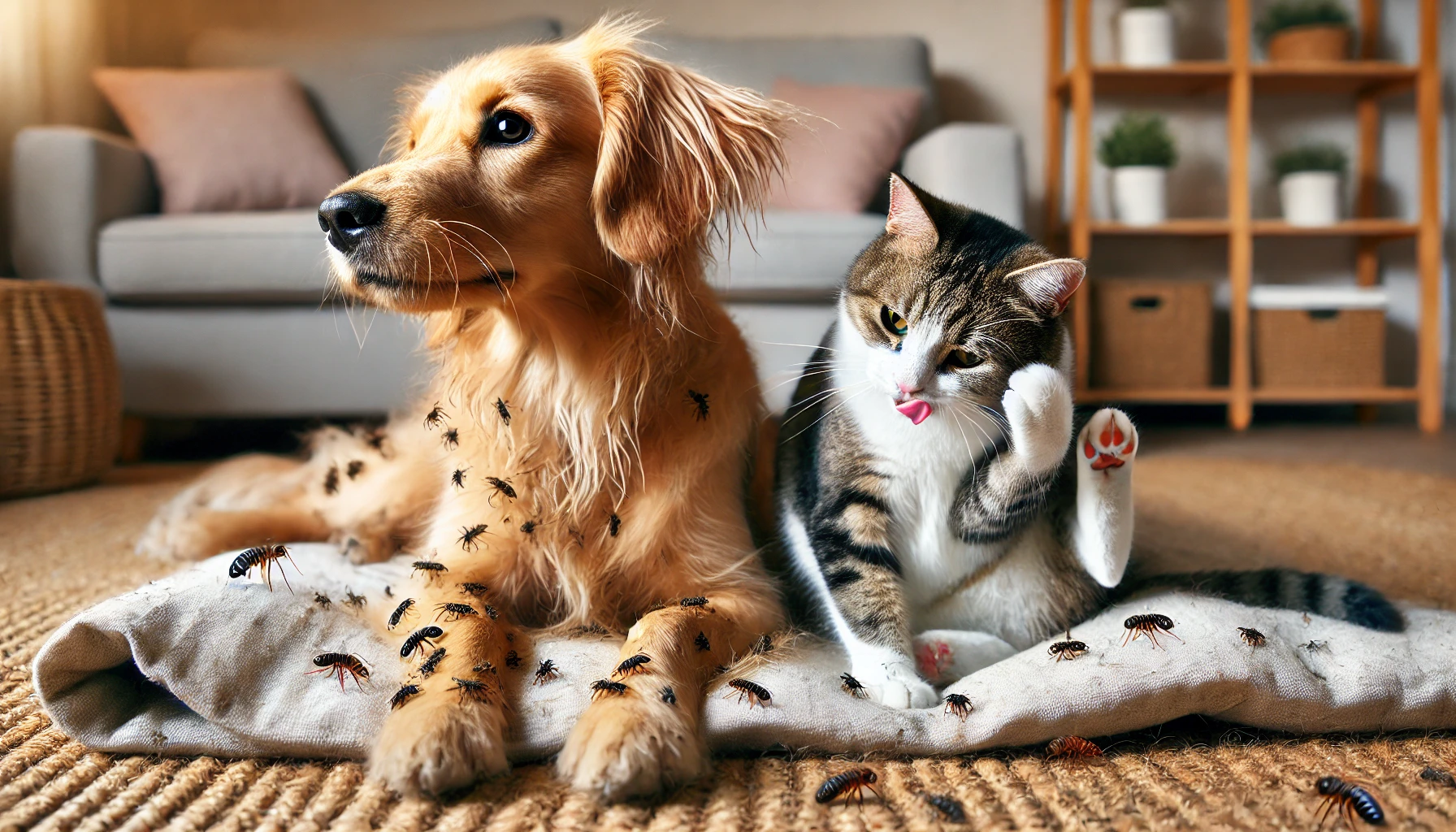 Fleas- The nightmare of the owner of every pet. They are small, timid, and, let’s face it, a pain in the neck for both pets and their humans. Whether your dog is constantly scratching or your cat is preparing itself, flea can make everyone’s life unhappy. But here is the question: Do dogs and cats get the same flea?
Well, here is the matter – while both of them deal with fleas, the answer is slightly more complicated than a simple “yes” or “no”. But don’t worry; We will break all this for you. Let’s reach the bottom of this!
Fleas- The nightmare of the owner of every pet. They are small, timid, and, let’s face it, a pain in the neck for both pets and their humans. Whether your dog is constantly scratching or your cat is preparing itself, flea can make everyone’s life unhappy. But here is the question: Do dogs and cats get the same flea?
Well, here is the matter – while both of them deal with fleas, the answer is slightly more complicated than a simple “yes” or “no”. But don’t worry; We will break all this for you. Let’s reach the bottom of this!
Fleas and Your Pets—The Basics
First, let’s get directly: dogs and cats can suffer from flea infection. Flea that gives them trouble? Cat Pissu (ctenocephalides Felis). And no, despite the name, it’s just a “cat’s talk.” You will observe this flea from your dog to your cat and sometimes other pets like rabbits. So, what’s really going here? Are there different flea for different animals? Like, but not really.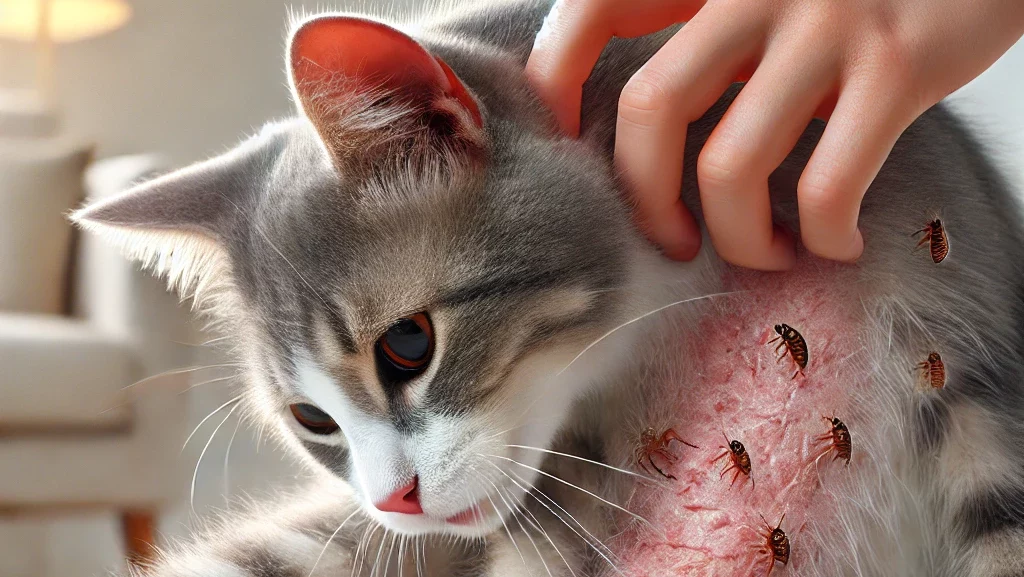

Not getting a solution?
Get your free pest control estimate today!1. The Cat Flea: It’s More Common Than You Think
So, what’s the deal with the cat flea (Ctenocephalides felis)? This species is the most common flea on dogs and cats in the U.S. It’s small, reddish-brown, and wingless. But don’t let its size fool you—it’s a mighty troublemaker. Cat fleas feed on the blood of their hosts, and they’re fast! They quickly move through your pet’s fur, looking for a spot to latch onto. You might think, “But wait, it’s a cat flea, so isn’t it just for cats?” Nope. Despite the name, this flea isn’t picky. It’s perfectly happy feeding on dogs, too. Regarding fleas in North America, the cat flea is the one you’ll be dealing with most often, regardless of whether you have a dog or a cat.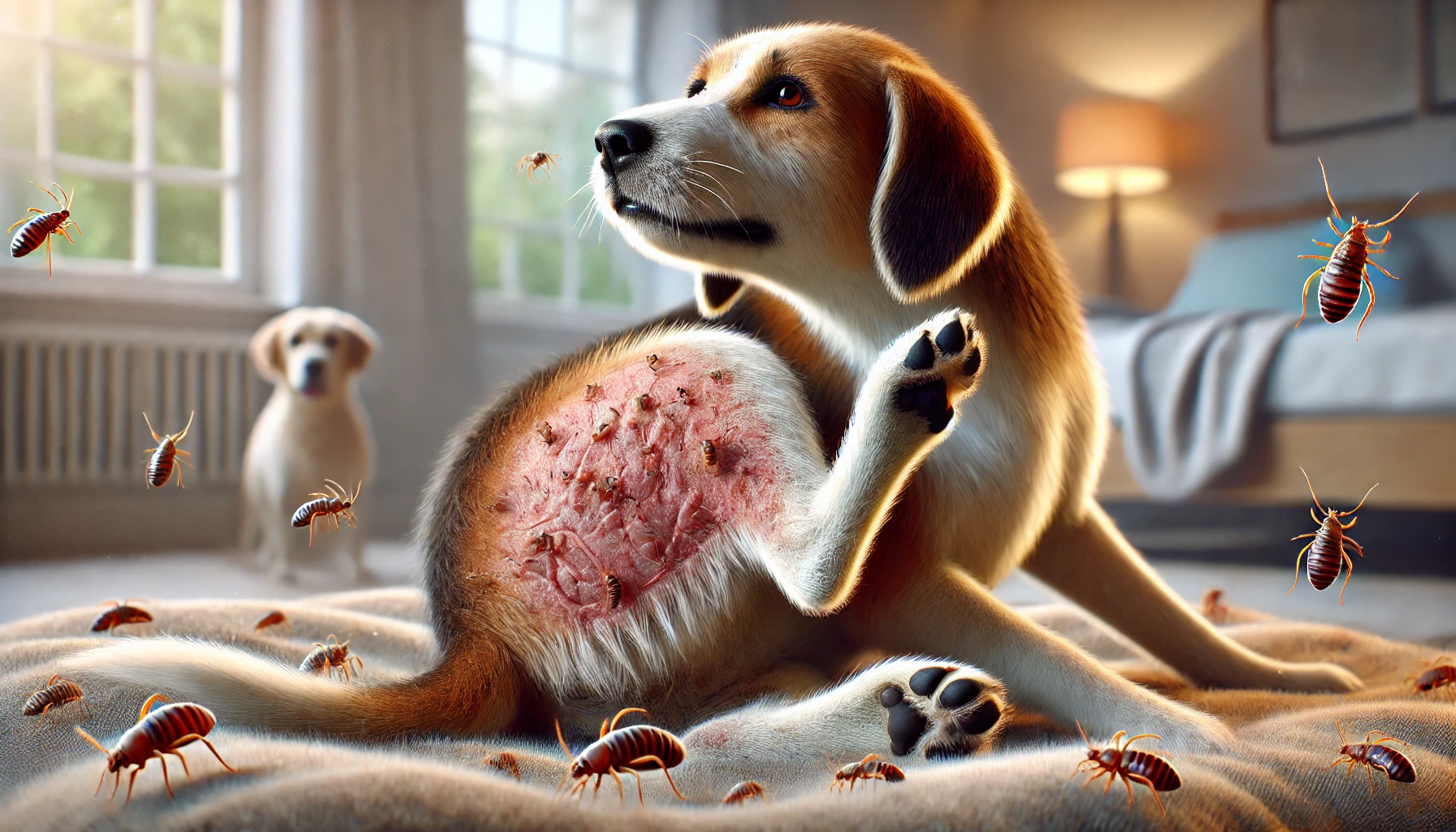
2. The Dog Flea: Less Common, but Still Around
Now, let’s talk about the dog flea (Ctenocephalides canis). This one’s a bit of an underdog (no pun intended). While it does affect dogs, it’s not nearly as standard in the U.S. as the cat flea. You might run into a dog flea, but don’t worry—it’s rare. Most of the time, when you see flea problems, it’s the cat flea causing the ruckus. Still, it’s good to know about dog fleas because if you’re dealing with a persistent flea infestation that won’t go away, it might be worth considering. But in most cases? The cat flea is the main culprit.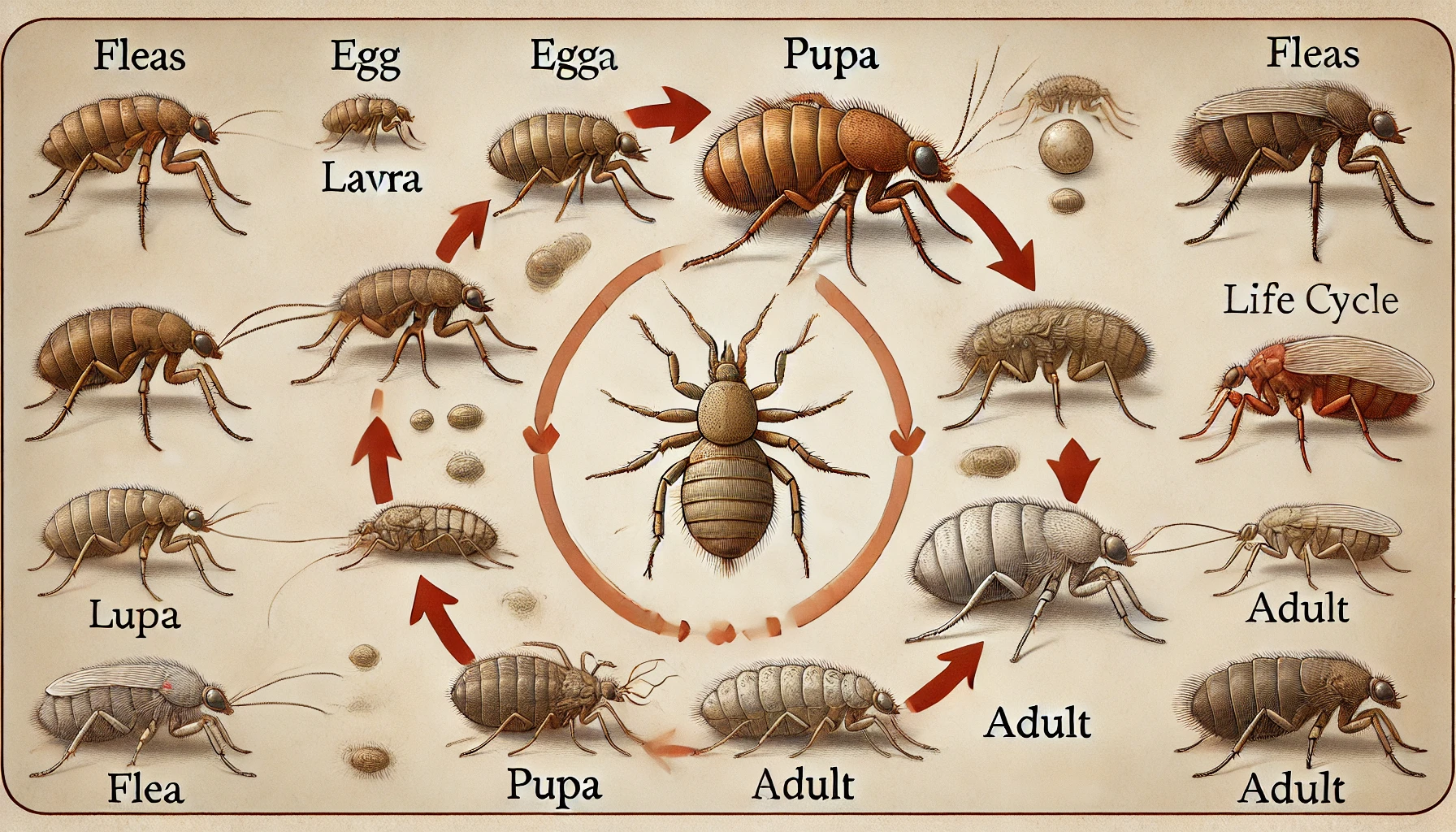
The Flea Life Cycle: Why You Need to Act Fast
Here’s where things get tricky. Fleas are fast reproducers. Their life cycle can leave you wondering how they appear out of nowhere. Let me explain the flea life cycle so you can better understand how fast an infestation can spiral out of control if you don’t catch it in time. Eggs: The Start of the Problem Female fleas lay eggs on their host after feeding. And here’s the kicker—these eggs don’t stay put. Nope. They fall into the environment (your house, carpet, pet bed). Flea eggs are tiny, white, and almost impossible to spot unless you look closely. But once they land somewhere, they can stay there, waiting for the right conditions to hatch. Larvae: Feeding on Flea Debris Once the eggs hatch, the larvae emerge. These little guys love dark, warm places, and they feed on organic debris—think flea faeces (yep, you read that right). Flea larvae can stay hidden in cracks, furniture, or pet bedding. Pupae: The Waiting Game The larvae then spin a cocoon and enter the pupal stage. This is where things get interesting. Flea pupae can remain dormant for weeks, even months. Why? They’re waiting for a sign that a host is near—vibrations, heat, and even carbon dioxide. Once they sense a host, they spring into action, ready to hop onto your pet and repeat the cycle. Adults: Ready for Action The adult flea comes out of the pupal stage, and you know what happens next. They find a pet, latch their skin, and feed on their blood. The female flea will again lay eggs, continue the cycle. And the best part? In a few weeks, a pair of flea can build hundreds of children. Yes, how fast it can grow.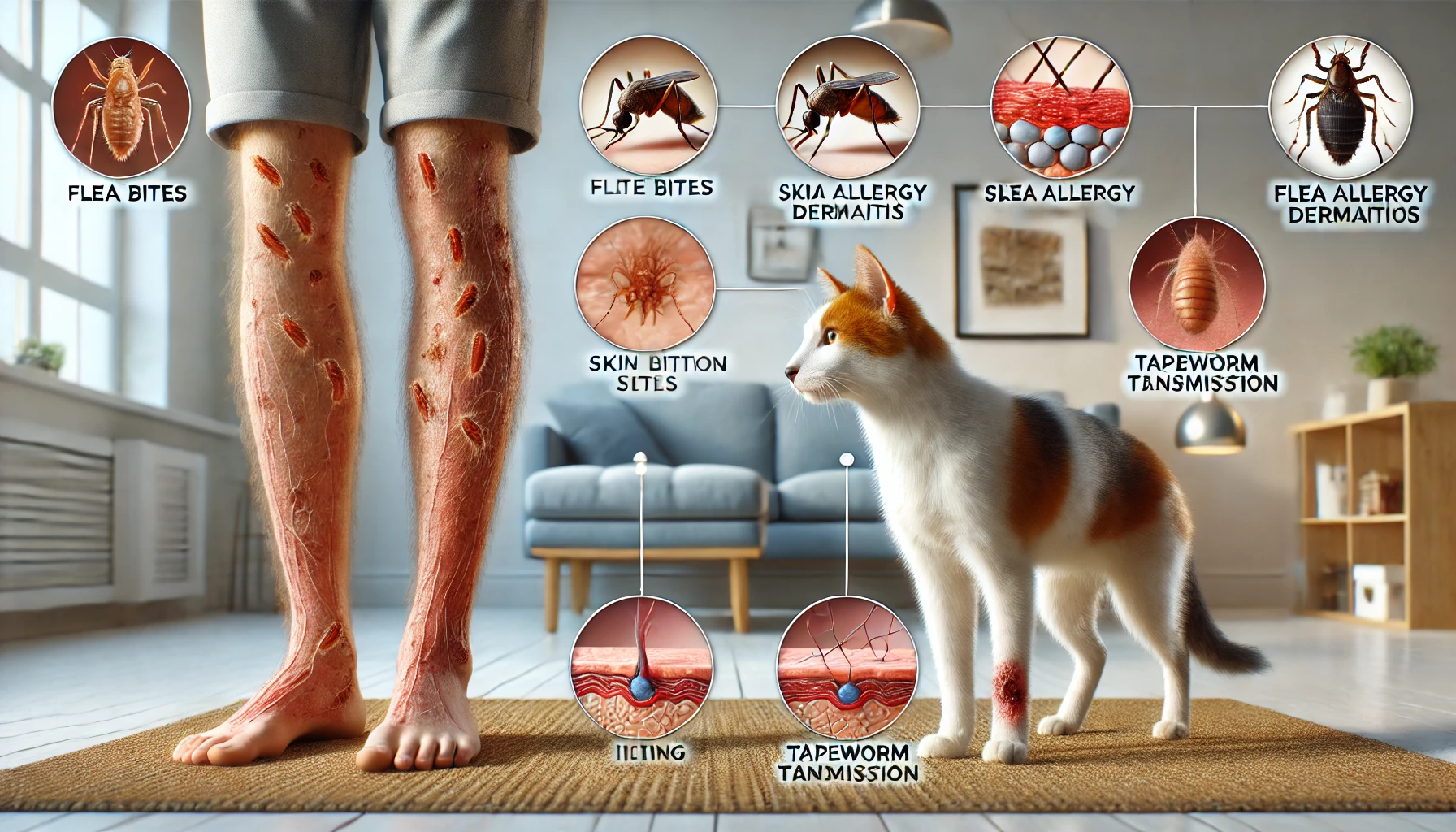
Fleas Aren’t Just an Itchy Problem—They’re Dangerous
It’s easy to brush off fleas as an annoying part of pet ownership, but they’re more than that. Fleas can cause various health problems, and you don’t want your pet to suffer because of them. Flea Allergy Dermatitis (FAD) If your pet is allergic to flea saliva, they might develop Flea Allergy Dermatitis (FAD). This condition causes severe itching, redness, and hair loss. It’s more than just annoying—it can lead to skin infections and other complications if left untreated. So, if you notice your pet scratching or licking excessively, don’t ignore it. Anemia: A Real Risk If the flea infestation gets out of hand, your pet could suffer from flea-induced anemia. This happens when fleas feed on your pet’s blood to the point where it causes a significant drop in red blood cell count. It’s a serious condition especially dangerous for puppies, kittens, or older pets. Symptoms include lethargy, weakness, and pale gums. If left untreated, anaemia can be life-threatening. Disease Transmission Fleas are also capable of transmitting diseases. The most common one is tapeworms, which your pet can get by ingesting infected fleas. Fleas can also carry Bartonella, a bacteria that causes cat scratch fever in humans. And while it’s rare today, fleas have historically been responsible for spreading the plague.
How to Prevent Fleas from Taking Over
Here’s the deal: preventing fleas is way easier than dealing with an infestation. You don’t want to wait until your pet is scratching like crazy or your house is full of little flea larvae. So, how do you keep your pet flea-free? 1. Use Flea Treatments Regularly The most important step in flea prevention is regular flea treatments. Whether it’s a topical treatment, oral medication, or flea collar, make sure you stay on top of it. Your vet can help recommend the best flea prevention method for your pet’s age, size, and health. 2. Clean Your Home Fleas don’t just live on your pet—they live in your home too. Vacuum frequently, wash your pet’s bedding in hot water, and use flea sprays or foggers to treat your home. Fleas love hiding in dark, cosy spots like carpets, so make sure you don’t leave them any room to settle in. 3. Outdoor Maintenance Fleas can even infest your yard, especially in shady areas where your pet likes to hang out. Keep the lawn trimmed and apply outdoor flea treatments to keep your pet’s play areas flea-free.How to Treat a Flea Infestation
- If fleas have already found their way into your home, here’s how to handle it:
-
Treat Your Pet: Begin flea treatment right away using vet-recommended medications to stop fleas at the source.
-
Clean Thoroughly: Vacuum your home, wash pet bedding in hot water, and use flea sprays to treat carpets and furniture.
-
Monitor and Repeat: Watch your pet for ongoing signs of fleas. Repeat treatments if needed and consult your vet if symptoms like flea allergy dermatitis or anemia appear.
Visit our Species, Control, and DIY Guide sections for additional resources on flea and ways to tackle a flea infestation.





